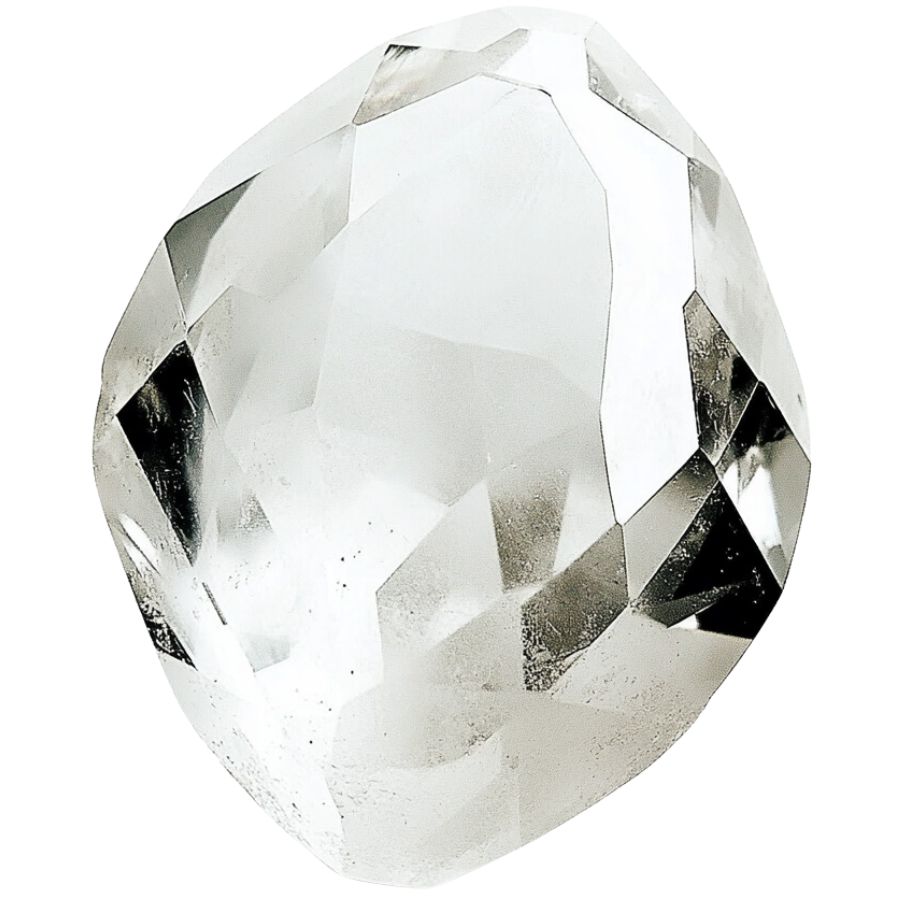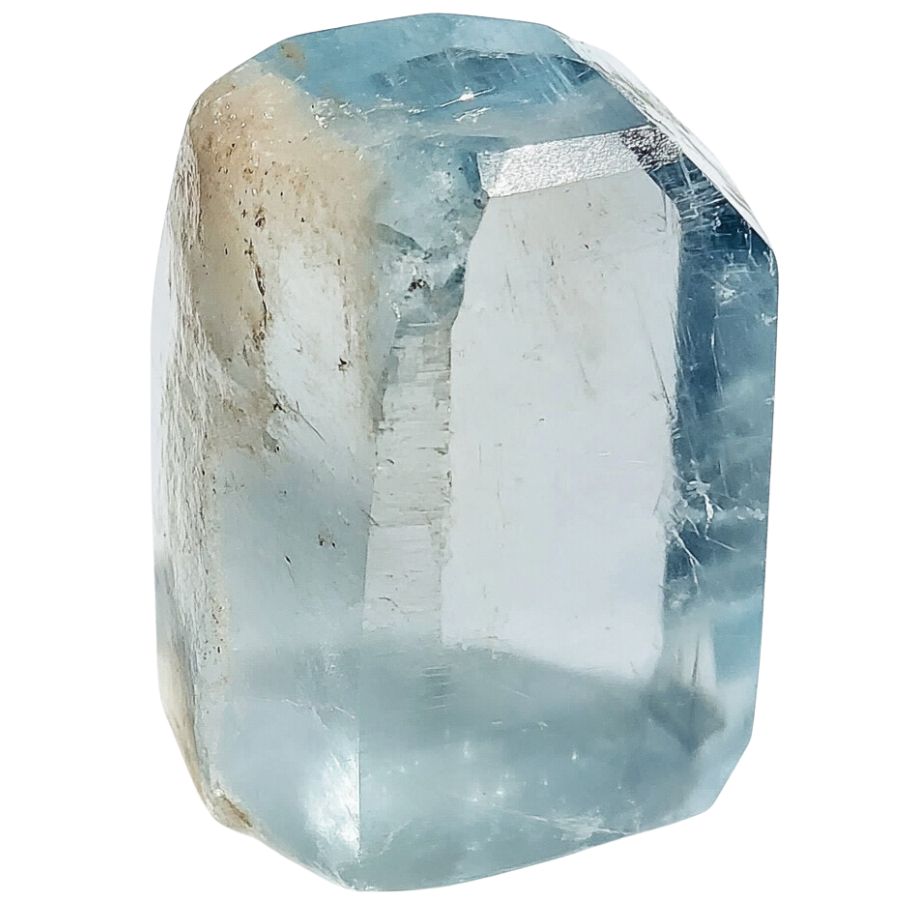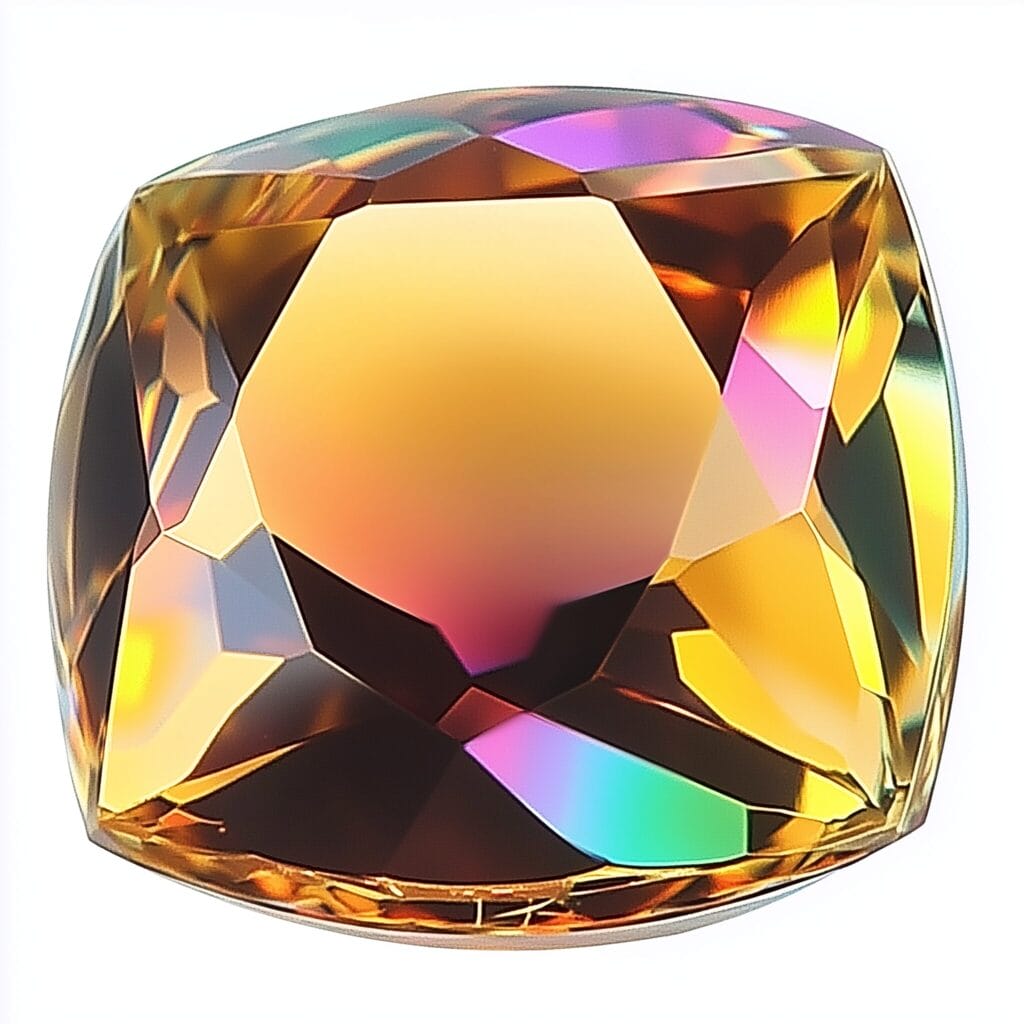
New York isn’t just about the city, it’s also a great place to hunt for topaz! From the Herkimer Diamond Mines in the Mohawk Valley to hidden spots like Barton Mines in the Adirondacks, there are plenty of exciting places to find sparkling gems.
This guide shows the best spots to find topaz in New York. Visit famous locations like Crystal Grove Diamond Mine or explore the rugged beauty of Gore Mountain for a chance to uncover topaz while enjoying the scenery.
How Topaz Forms Here

Topaz forms inside hollow spaces in igneous rocks under specific conditions. It grows when high pressure combines with fluorine-rich vapors.
These spaces form as magma cools, leaving room for minerals to crystallize. Over time, the right elements settle, allowing topaz to grow in these gaps.
Topaz often grows alongside quartz and other silicate minerals. This close growth can result in interesting combinations of minerals in one rock.
Topaz is found in areas shaped by volcanic activity and the movement of magma beneath the Earth’s surface. This includes regions where ancient volcanoes once erupted or where magma cooled slowly underground, forming cavities where topaz could grow.
Types of Topaz
Topaz can look different depending on what it’s made of and how it forms. These differences are due to changes in the elements present in the topaz crystals and their environment during their growth.
Imperial Topaz

Imperial topaz is prized for its rich colors, including yellow, pink, and pink-orange. Pink stones are particularly rare. Brazilian imperal topaz often features shades ranging from bright yellow to deep golden brown, with some showing hints of violet.
Some light or brown topaz stones are treated to bring out brighter colors like gold, pink, or violet. However, these enhanced stones may lose their color if exposed to sunlight for too long.
The name “Imperial Topaz” comes from its historical connection to Russian royalty. During the 18th and 19th centuries, this gemstone was reserved for royal use and often featured in their jewelry.
Mystic Topaz

Mystic topaz is a natural gemstone enhanced by a special coating applied to colorless topaz. This thin coating creates a rainbow-like effect on the surface, giving the stone a vibrant, colorful look.
The coating used on mystic topaz is similar to the coating applied to camera lenses. It creates an iridescent effect that shows a mix of bright colors across the stone’s surface.
Although mystic topaz is made from real topaz, its treated surface often causes confusion. The bold colors and shiny appearance come from the added coating, not from the stone itself.
London Blue Topaz

Despite its name, London Blue topaz has no ties to England! The name is simply a marketing term used to describe this popular gemstone.
London Blue topaz is prized for its deep, stormy blue color. This variety is one of the most in-demand types of blue topaz because of its rich and distinctive hue.
The striking blue shades of London Blue topaz are produced through heat treatment, which enhances its natural trace elements. Although topaz is found in many places, most gem-quality stones used for London Blue topaz come from Brazil.
Swiss Blue Topaz

Swiss Blue topaz is known for its bright and vivid blue color, with a light tone and medium saturation.
Because natural blue topaz is quite rare, most Swiss Blue topaz is created by treating clear or pale-colored topaz with radiation and heat. That’s how it gets its vivid color!
Its bright blue shade is also much lighter and happier compared to the darker tones of London Blue topaz.
Blue Topaz

Natural blue topaz is very rare and usually comes in soft, pale blue shades. Because it is so uncommon, most blue topaz available today has been artificially treated to achieve its color.
To make blue topaz, clear or colorless stones are exposed to high-energy radiation and then heated. This method, developed in the 1970s, allows blue topaz to be produced in different shades.
The radiation changes the structure of the crystal, affecting how it reflects and absorbs light. This creates the blue color, making treated blue topaz look very similar to natural blue topaz.
Colorless/White Topaz

Colorless topaz is the most common type found in nature, but small amounts of other elements can give it light blue or golden brown shades. This type of topaz is often treated with heat and radiation to turn it into other colors.
Topaz doesn’t sparkle as much as some other gemstones because of how it bends light. Still, high-quality colorless topaz can shine more than quartz of the same cut and can be polished to a smooth, shiny finish.
When cut in a “brilliant” style, colorless topaz sparkles in different ways depending on the angles. It might have a bright center with duller sides or sparkling sides with a less shiny middle.
Pink Topaz

Pink topaz is a rare type of topaz that gets its color from chromium replacing aluminum in the crystal. This natural process makes pink and red topaz quite rare.
Some pink topaz is made through artificial treatments that change the stone’s color. These treatments help create more pink topaz and make it easier to find in stores.
Pink topaz can be pale or bright, depending on how much it is treated or what natural impurities it contains.
Green Topaz

Green topaz forms naturally but is very rare and costly. Most green topaz sold today is created by treating or coating colorless topaz.
A process called diffusion treatment, which uses chemicals on white topaz, is often used to produce green topaz. Darker green shades usually come from irradiation, similar to how darker blue topaz is made.
Light green topaz, with a color similar to sea green aquamarine, can form naturally but is hard to find. These pale tones differ from the brighter greens created through treatments.
Bicolor Topaz

Bicolor topaz, also known as polychrome topaz, is a rare natural gemstone found only in the Volyn deposit in Ukraine. These gems display multiple colors in one crystal, often combining shades of blue and gold.
The Volyn deposit is known for its large, high-quality topaz crystals, including these bicolor stones!
What Rough Topaz Looks Like
To find rough topaz in nature, you’ll need to know what it looks like and what its key features are. Knowing these can help you spot the gemstone more quickly and easily.
When you’re out looking for rough Topaz on your own it’s important to know what you’re looking for. But before we dive into specifically what to look for you need to make sure you understand the type of rocks and minerals you’re seeing.
So many rockhounds find some pretty incredible rocks and minerals and toss them away because they don’t know what they have.
DON'T MISS OUT ON ANY GREAT FINDS!
While you're out searching for Topaz you're going to find A LOT of other interesting rocks and minerals along the way. The last thing you want to do is toss out something really interesting or valuable. It can be easy to misidentify things without a little guidance.
You absolutely need a good reference guide in order to understand what you're looking at!
We've put together a fantastic field guide that makes identifying 140 of the most interesting and valuable rocks and minerals you will find REALLY EASY. It's simple to use, really durable, and will allow you to identify just about any rock and mineral you come across. Make sure you bring it along on your hunt!

Now, back to the identification specifics:
Crystal Shape

Raw topaz crystals can have different shapes, from long and thin to short and thick. Their ends also vary, often showing blunt, pyramid-like, chisel, or wedge shapes.
Topaz can sometimes appear as chunky pieces, grainy fragments, or smooth, rounded pebbles. It may also form in column-like shapes or mimic the look of feldspar through a process called pseudomorphing.
Hardness

Raw topaz has a hardness of 8 on the Mohs scale, making it tougher than quartz and able to scratch glass. To identify raw topaz, you can test its ability to scratch materials like glass.
However, it can still chip along its natural cleavage planes. It’s still durable but will need to be handled carefully.
Cleavage

Topaz is known for its perfect basal cleavage, which lets it break cleanly along a single flat surface. These smooth, flat surfaces are a defining feature of raw topaz.
This feature is especially clear in rough or broken pieces. It helps set topaz apart from other minerals that may look similar.
Transparency and Glass-Like Luster

Raw topaz is recognized for its glassy, or vitreous, shine, which is most noticeable on freshly broken surfaces. This shiny luster helps set it apart from minerals with dull or resin-like finishes.
Generally, raw topaz can be clear or translucent, adding to its reflective appearance. These qualities together make it easier to identify raw topaz in its natural form.
Color

Raw topaz comes in many colors, including colorless, yellow, brown, blue, orange, and gray. These natural hues are caused by impurities in the crystal structure, giving the stone its variety of shades.
Less common colors include reddish-pink, pink, and green. These rare tones are especially noticeable in unpolished stones.
Tips on Where to look
Finding topaz in nature starts with knowing the right places to look. Certain areas within these state are more likely to have this gemstone in its raw form.
Granite Pegmatites

Search for topaz in areas with granitic pegmatites, where large crystals of feldspar, quartz, and mica are common. These places have the right conditions for topaz to form.
Rhyolites

Look for topaz in volcanic areas with rhyolite, where it can form in cavities within the rock. Focus on spots with visible pockets or cavities that might hold crystals.
Stream Beds and Gravel Deposits

Explore stream beds and gravel deposits near areas known for topaz. Flowing water can break down rocks, carrying topaz crystals downstream and depositing them in sediments.
Hydrothermal Veins

Look in areas with hydrothermal activity, where topaz can form in quartz-rich veins. These veins develop from hot, mineral-filled fluids.
The types of Topaz you can find around the state

In New York, the most common type of topaz is colorless or white, sometimes with a hint of light blue or gold. Some of this topaz is treated with heat or radiation to create vibrant colors like blue or pink.
Pink and green topaz are harder to find but can still be discovered in New York. Pink topaz is either naturally colored or treated, while green topaz is rare and typically created by treating colorless stones.
Some Great Places To Start
These are some of the places where you can find topaz around the state.
Always Confirm Access and Collection Rules!
Before heading out to any of the locations on our list you need to confirm access requirements and collection rules for both public and private locations directly with the location. We haven’t personally verified every location and the access requirements and collection rules often change without notice.
Many of the locations we mention will not allow collecting but are still great places for those who love to find beautiful rocks and minerals in the wild without keeping them. We also can’t guarantee you will find anything in these locations since they are constantly changing.
Always get updated information directly from the source ahead of time to ensure responsible rockhounding. If you want even more current options it’s always a good idea to contact local rock and mineral clubs and groups
Near 164th Street & Broadway

You might be surprised to find topaz around 164th Street and Broadway in Manhattan. While it seems like an unlikely spot, construction sites, gravel piles, and old building materials can sometimes hide these gems.
Look through loose gravel, rock piles, or freshly dug soil for shiny, glass-like stones that could be raw topaz. A small sifter or magnifying glass can help, and don’t be afraid to ask construction workers if you can search through the rubble!
Bar ‘N’ Grill Claim

The Bar ‘N’ Grill Claim in upstate New York is a fantastic place to find topaz. Known for its variety of minerals, including colorless and light blue topaz, it’s a great spot for both beginners and experienced gem hunters.
Search in loose dirt, gravel, or near stream beds where the soil has been disturbed. Look for clear or slightly tinted stones with a shiny surface, and bring tools like a small shovel, sifter, and bucket to help with your search.
New York City

New York City might not seem like a gem-hunting spot, but it actually has some great opportunities to find topaz. Urban rockhounds have found success around construction sites, and old buildings where gravel and dirt can hide gems.
Focus on areas where the ground has been disturbed, like construction zones or exposed soil. Topaz can appear as clear, shiny stones, and a magnifying glass or small sifter can help you spot them.
Upstate New York

Upstate New York has some great spots for finding topaz, especially outside the city. The Mohawk Valley is a great place to start, known for its variety of minerals, including topaz.
When searching for topaz, focus on areas where the ground has been disturbed, like stream beds or construction sites. Topaz often looks clear and smooth, with a shiny surface, and a small sifter and magnifying glass can help you spot it.
Delaware River

The Delaware River in New York is a great place to search for topaz, especially along its banks and gravel bars. Look for spots where the river bends or the current slows down, as these areas often collect rocks and minerals.
To increase the chances of finding topaz, focus on shallow sections or gravel beds. After heavy rainfall, try using a screen or sifting method to uncover hidden gems.
Places Topaz has been found by county
Other places in the state are good for looking for topaz. These areas have different types of landscapes but still offer the chance to find some great gems.
| County | Location |
| Essex | Adirondack Mountains |
| Essex | Near the town of Ticonderoga |
| Greene | Catskill Mountains |
| Herkimer | Near the Mohawk River |
| Madison | Near Canastota, south of Oneida Lake |
| Monroe | Near the town of Webster |
| Nassau | Near Mineola |
| Orange | Near Cornwall, along the Hudson River |
| Putnam | Near Cold Spring, along the Hudson River |
| Rensselaer | Near Troy, near the Hudson River |
| Saratoga | Near Saratoga Springs |
| Schoharie | Near Schoharie, along the Schoharie Creek |
| Suffolk | Long Island, various localities |
| Ulster | Near the Shawangunk Ridge |
| Warren | Near Lake George |
| Washington | Near Salem and the Battenkill River |
| Westchester | Near Yonkers, along the Hudson River |
| Clinton | Near the town of Keeseville |
| Franklin | Near the town of Malone |
| Jefferson | Near the Black River, near Watertown |
| Albany | Near the town of Guilderland |
| Allegany | Near Angelica, in the southern part of the county |
| Cayuga | Near Auburn, along the Seneca River |
| Columbia | Near Hudson, along the Hudson River |
| Dutchess | Near Poughkeepsie |
| Greene | Near Windham, in the Catskill Mountains |
| Onondaga | Near Syracuse |
| Ontario | Near Canandaigua, along the Finger Lakes |
